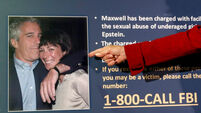Australia tries to uncover if dingo really killed baby 30 years on
Inside the tent, the infant girl had vanished. Outside, her mother was screaming: “The dingo’s got my baby!”
With those panicked words, the mystery of Azaria Chamberlain’s disappearance in the Australian Outback in 1980 became the most notorious, divisive and baffling legal drama in the country’s history.














